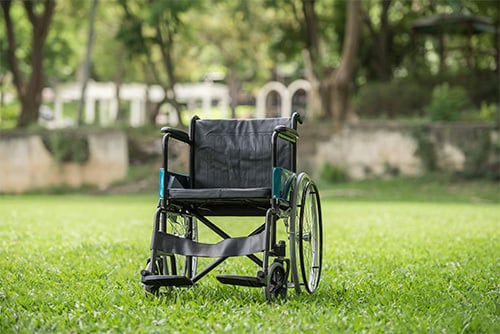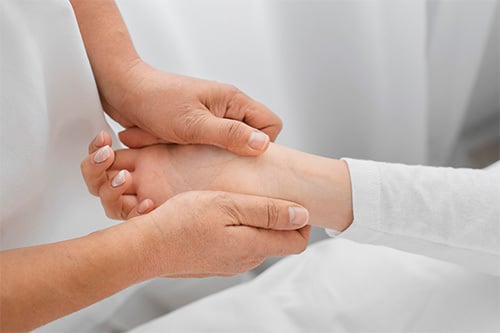Paralysis Attack: Symptoms, Causes and Treatment
February 28, 2025

Paralysis is the loss of muscle function within the body. It is usually temporary, and in some cases, it’s permanent. Paralysis isn’t limited to any particular part of the body, but most cases are observed in limbs. Partial and entire paralysis can occur at any point in time. No pain is inflicted on a patient affected by paralysis upon its occurrence.
Depending on the character of the underlying cause, the treatment plan is charted either to cure or treat the condition while ensuring that the patient’s daily lifestyle isn’t drastically affected.
A stroke is the most typical underlying condition that triggers partial or complete paralysis in a patient. In partial paralysis, the patient remains in partial control of the affected muscle; in incomplete paralysis, the patient has no control over the affected muscle tissue.
Types
Paralysis can be classified into different types based on the affected areas of the body:
- Diplegia: This type affects the same area on both sides of the body, such as both arms, both legs, or both sides of the face.
- Hemiplegia: Paralysis occurs on one side of the body, impacting an arm and a leg on the same side.
- Monoplegia: This condition restricts movement in a single limb, either an arm or a leg.
- Paraplegia: It primarily affects both legs and, in some cases, the torso.
- Quadriplegia (Tetraplegia): This severe form of paralysis impacts all four limbs and the torso. Individuals with quadriplegia may experience limited or no movement from the neck down.
Symptoms
Paralysis is mainly characterized by the loss of control over certain body parts, making movement difficult or impossible. It can start suddenly or gradually. Sometimes, it comes and goes. The most common symptoms of paralysis are:
- Loss of sensation in arms and legs
- Reduced muscle function
- Reduced motor functions
- Losing the ability to talk
Early symptoms are:
- Changes in mood, personality, or behavior
- Confusion or loss of consciousness for even a brief moment
- Difficulty with memory, thinking, talking, comprehension, writing, or reading
- Drooling
- Numbness
- Constipation
- Diarrhoea
- Fever
- Hearing loss
- Neck pain
- Rash
- Severe headache
Paralysis can affect any part of the human body, including:
- The face
- The hands
- One arm or leg
- One side of the body
- Both legs
- Both arms and legs
The affected part of your body can also be:
- Stiff (spastic paralysis), with occasional muscle spasms
- Floppy and numb, painful, or tingling sensations
Causes
Never should you try to identify the cause of a paralysis attack yourself, and always seek a doctor’s consultation to get a proper diagnosis.
Some of the leading causes are:
- Bell’s Palsy – Sudden weakness on one side of the face, with earache or face pain. Temporary paralysis when waking up or falling asleep – Sleep paralysis
- Post a severe accident or injury – a severe head injury or spinal cord (back) injury
- Weakness in the face, arms, or legs that appears and disappears.
Other causes include
Some people are born with congenital disabilities like spina bifida that cause paralysis. In addition, a traumatic injury or medical condition often damages muscle and nerve function. Strokes and medulla spinalis injuries (Spinal Cord Injuries) are the highest causes of paralysis. Besides that, the following factors can also be responsible.
- Acute Flaccid Myelitis
- Brachial Plexus Injury
- Brain Injury
- Cerebral Palsy
- Guillain-Barre Syndrome
- Multiple Sclerosis
- Muscular Dystrophy
- Neurofibromatosis
- Post-Polio Syndrome
- Spina Bifida
- Stroke
- Spinal Tumours
- Brain Tumours
- Spinal Cord Injury
Diagnosis
The specialist will examine you and ask about any injuries. For gradual paralysis, you will need to know when you began noticing the problem.
Some of the procedures include
- X-rays show broken bones that would cause nerve injury.
- Imaging tests, such as a CT scan or MRI, check for stroke, brain injury, or spinal cord injury signs.
- A whole-body imaging scan shows bones, muscles, and tissues.
- Myelogram checks for medulla spinalis and nerve injuries.
- An electromyogram (EMG) tests the electrical activity of nerves and muscles.
- A spinal tap (lumbar puncture) tests cerebrospinal fluid for infection, inflammation, and disorders like MS.
Treatment
Paralysis attacks can have an enormous impact on your life. Still, support is there to assist you in residing as independently as possible and having the most superficial possible quality of life. The help you would like will primarily rely upon what’s causing your paralysis.
Some of the things that can help people who are paralyzed include:
- Mobility Equipment includes wheelchairs and limb supports (braces).

- Physiotherapy assists you in maintaining the maximum amount of strength and muscle mass.

- Occupational therapy helps you adapt your everyday activities, namely dressing and cooking, to be more accessible.

- Depending on the nature of the condition, medicines will be prescribed by the doctor to alleviate problems like pain, stiffness, and muscle spasms.

- Communication will help patients who are suffering from quadriplegia. They can rely on voice-command-based systems to control things like light, temperature, TV, audio units, and mobile phones. In addition, patients suffering from locked-in syndrome can use specially adapted computers to make small sentences or improve the form of current communication.

Frequently Asked Questions
1. How long does a paralysis attack last?
The severity of symptoms can range from mild weakness to a paralytic attack. Research shows that symptoms tend to appear and progress over 72 hours, after which they stabilize. In most cases, symptoms will settle without treatment over time, but they can take months or years to withdraw completely.
2. What causes sudden paralysis in the legs?
Sudden paralysis in the legs can result from conditions like stroke, spinal cord injury, Guillain-Barré syndrome, or nerve compression. Immediate medical attention is crucial for diagnosis and treatment.







